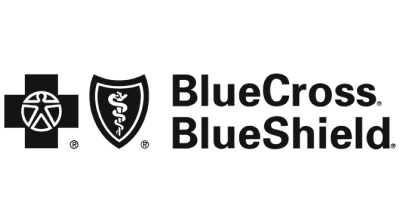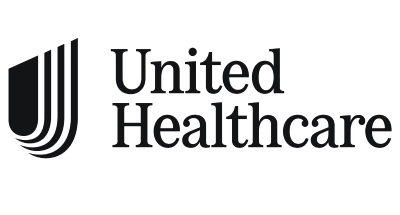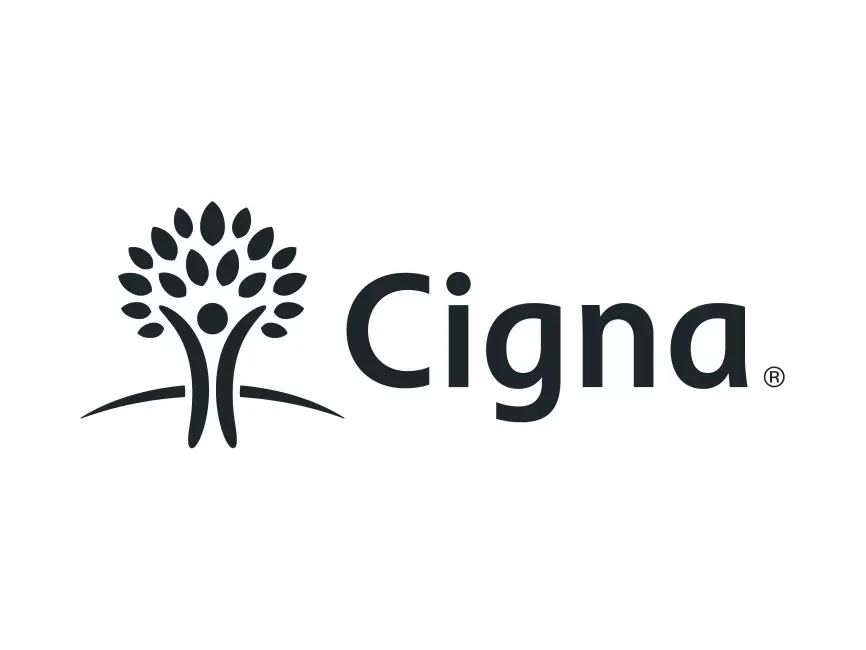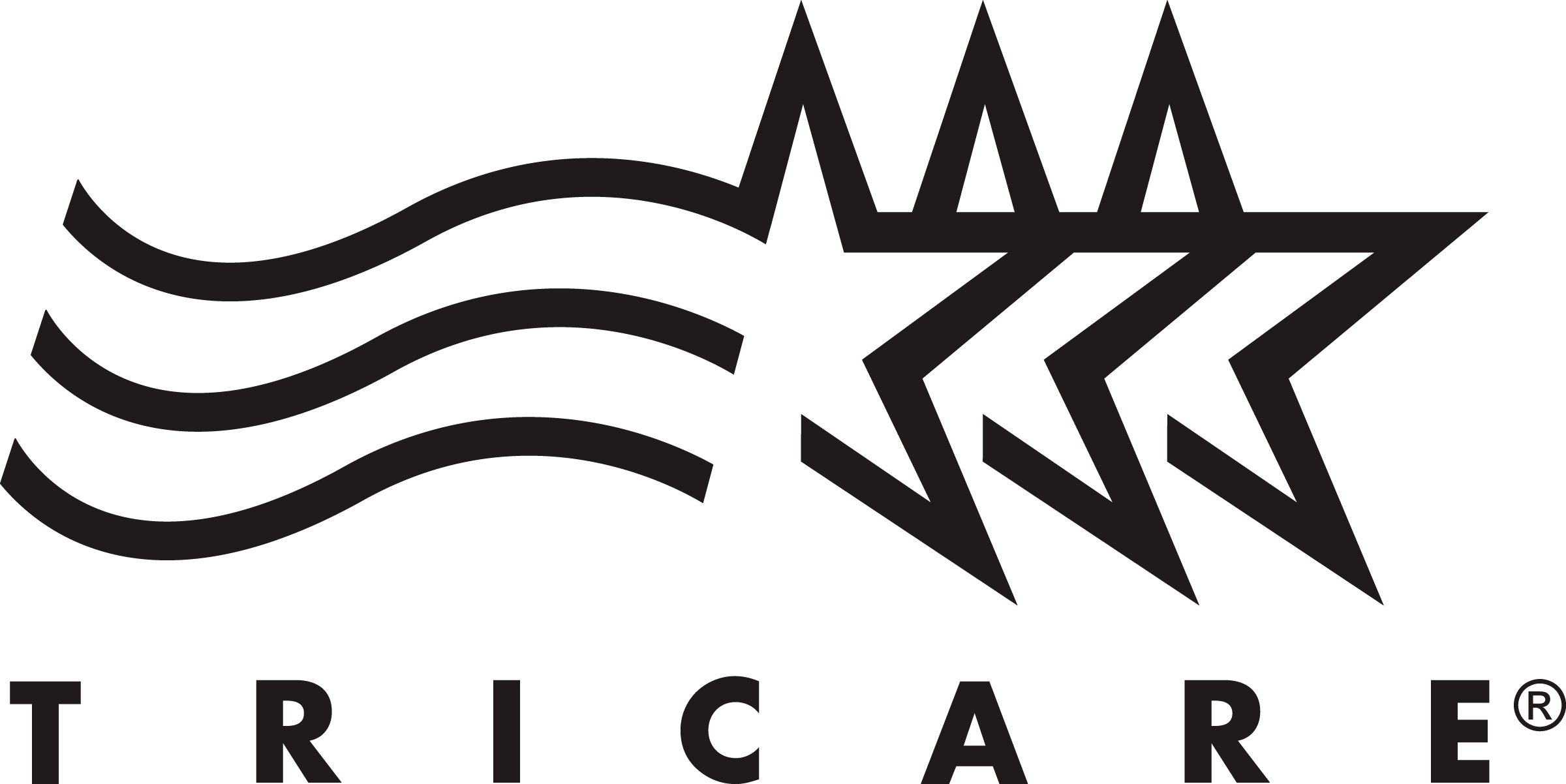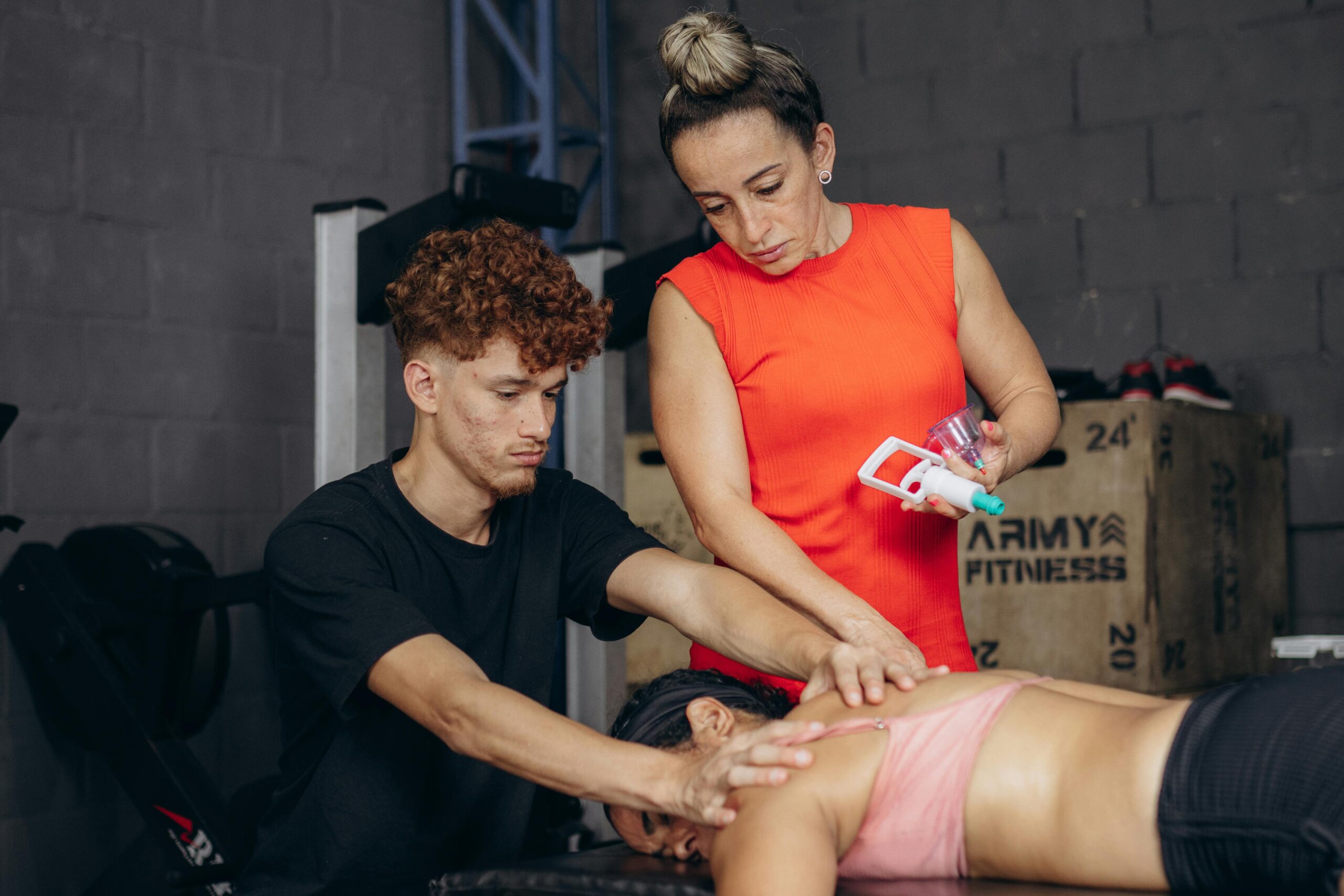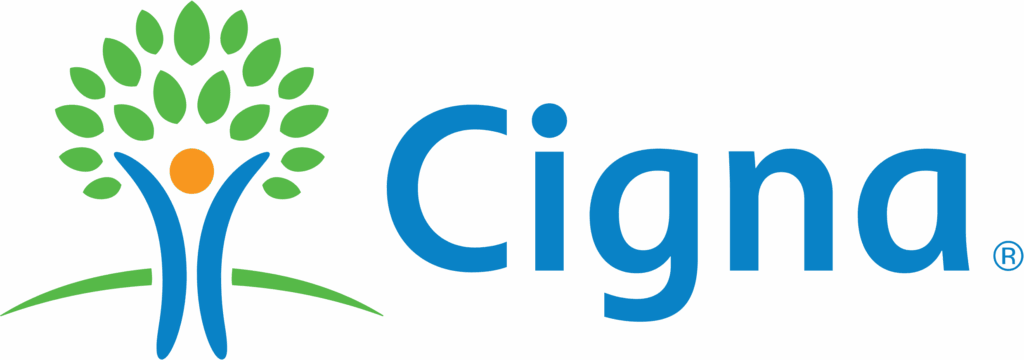The Science Behind Exercise and Sobriety: How Movement Changes Your Brain and Body
Understanding why exercise helps in recovery can be incredibly motivating. It’s not just about burning calories or building muscle; it’s about profound physiological and psychological changes that directly counteract the damage caused by substance abuse and support healing. Addiction fundamentally alters brain chemistry, affecting mood regulation, stress response, and the brain’s reward system. Exercise helps to repair and rebalance these systems.
One of the most well-known effects of exercise is the release of endorphins. These are natural opioids produced by the body, sometimes called “feel-good” chemicals. Endorphins bind to the same receptors in the brain as opioid drugs, but in a healthy, non-addictive way. They create feelings of pleasure, well-being, and even pain relief – think of the runner’s high. For someone in recovery, this natural mood boost is invaluable. It provides a healthy alternative to the artificial highs sought through substance use, helping to reduce cravings and improve overall mood and outlook. This natural uplift can be particularly helpful in managing the emotional challenges that often arise during sobriety, complementing the emotional regulation skills learned in therapies like
online CBT therapy which is often part of a
Virtual IOP Program.
Beyond endorphins, exercise influences other crucial neurotransmitters. It can increase levels of dopamine, another key player in the brain’s reward and motivation system. Addiction hijacks this system, leading to dopamine surges that reinforce drug-seeking behavior. Regular exercise helps to normalize dopamine levels over time, allowing the brain to find pleasure in healthy activities again. This re-regulation is vital for reducing the intense focus on obtaining substances and redirecting motivation towards positive goals, including maintaining sobriety and engaging in activities that support recovery.
Exercise also helps regulate serotonin and norepinephrine, neurotransmitters that play significant roles in mood, sleep, and stress. Many people with substance use disorders also struggle with mental health conditions like depression and anxiety, a common scenario addressed through
Dual Diagnosis Treatment. Exercise has been shown to be as effective as medication for some individuals in treating mild to moderate depression and anxiety. By improving the balance of these chemicals, exercise can alleviate symptoms of these co-occurring disorders, making recovery feel more manageable and sustainable. Compassion Recovery Center’s integrated approach addresses both substance abuse and mental health concurrently, and encouraging exercise is part of the lifestyle recommendations that support this dual healing process.
The impact of exercise extends to stress hormones, particularly cortisol. Chronic stress is a major trigger for relapse. Exercise acts as a powerful stress reducer, helping the body process and release built-up tension. Regular physical activity can lower cortisol levels over time, improving your body’s ability to handle stress without feeling overwhelmed. This improved stress response is a critical skill for maintaining sobriety in the face of life’s inevitable challenges.
Furthermore, exercise improves sleep quality. Addiction often disrupts sleep patterns, leading to insomnia or irregular sleep, which can negatively impact mood, cognitive function, and cravings. Regular physical activity, especially aerobic exercise, can help regulate the body’s internal clock and promote deeper, more restorative sleep. Better sleep means better emotional regulation, improved decision-making, and increased resilience – all essential components of successful recovery.
Studies have increasingly highlighted the specific benefits of exercise in addiction recovery populations. Research indicates that individuals who incorporate regular exercise into their recovery programs report reduced cravings, lower rates of relapse, improved mood, increased self-esteem, and better overall physical health compared to those who do not exercise. Exercise provides a positive coping mechanism, a healthy distraction from urges, and a constructive way to use time that might otherwise be spent thinking about or seeking substances.
In essence, exercise helps to heal the brain and body from the inside out. It restores chemical balance, reduces stress, improves sleep, and provides natural boosts in mood and motivation. These physiological changes lay a stronger foundation for recovery, making it easier to engage in therapy, build healthy relationships, and navigate the challenges of sober living. For anyone considering
telehealth addiction treatment like the programs offered by Compassion Recovery Center, adding exercise is a powerful complementary strategy that enhances the effectiveness of therapy and support. If you’re wondering how to start, reaching out to us for a confidential discussion is a great first step –
Contact Us today.
Benefits of Exercise in Recovery: Healing the Mind, Body, and Spirit
The positive effects of incorporating exercise into your recovery journey are numerous and far-reaching, touching not just your physical health but also your mental and social well-being. These benefits collectively contribute to a more stable, fulfilling, and resilient sobriety.
Physical Benefits:
Substance abuse takes a significant toll on the body. Malnutrition, organ damage, weakened immune systems, and poor cardiovascular health are common consequences. Exercise provides a direct path to physical repair and rejuvenation. Regular physical activity improves cardiovascular health, strengthens muscles and bones, enhances circulation, and can help restore healthy body weight. It boosts the immune system, making you less susceptible to illness. Improved energy levels are another major benefit, counteracting the fatigue that is often part of post-acute withdrawal syndrome (PAWS). As your body becomes stronger and healthier, you feel better physically, which in turn supports your mental and emotional state. Simple activities like walking can make a big difference. For those in Orange County, taking advantage of local parks or trails, or even just walking around your neighborhood, can be a great start. Even if you are participating in
virtual rehab California programs, you can easily step away from your screen for a walk.
Mental Benefits:
The mental health benefits of exercise are profound, especially for individuals in recovery who often struggle with anxiety, depression, irritability, and difficulty managing emotions. As discussed, exercise releases endorphins and helps regulate other mood-influencing neurotransmitters, acting as a natural antidepressant and anxiolytic. Beyond the chemical effects, exercise provides a sense of accomplishment and competence. Setting and achieving fitness goals, no matter how small initially, builds self-esteem and self-efficacy – the belief in your ability to succeed. This is critical in recovery, where past failures or feelings of worthlessness can be significant hurdles. Exercise offers a healthy way to cope with stress, cravings, and difficult emotions. Instead of turning to substances, you can turn to movement. Physical activity provides a healthy distraction and allows you to process feelings in a constructive way. Mindfulness practices, often incorporated in therapy within programs like
Mental Health Treatment or
Virtual IOP Program, can be integrated with exercise, such as mindful walking or yoga, enhancing the mental benefits.
Social Benefits:
Recovery can sometimes feel isolating, but building a supportive community is essential. Exercise can be a fantastic way to connect with others who share similar goals for health and well-being. Joining a walking group, a hiking club, a fitness class, or a sports team can provide opportunities for positive social interaction and support. Many recovery communities also organize sober fitness events. These activities offer a chance to build healthy relationships based on shared positive experiences, reducing feelings of loneliness and isolation. Even if you are participating in a
telehealth addiction treatment program, you can seek out local sober support groups that incorporate activities, or find online fitness communities. Shared challenges and successes in fitness can foster camaraderie and provide accountability, which is vital for both exercise adherence and sobriety.
In summary, exercise contributes to recovery by:
– Reducing stress, anxiety, and depression
– Improving mood and emotional stability
– Reducing cravings and withdrawal symptoms
– Boosting energy levels and combating fatigue
– Improving sleep quality
– Increasing self-esteem and confidence
– Providing a healthy coping mechanism and distraction
– Offering opportunities for positive social connection
– Repairing physical health damaged by substance use
– Establishing a healthy routine and discipline
Incorporating fitness into your life is an investment in your long-term sobriety and overall well-being. It’s a tangible way to build a stronger, healthier version of yourself, capable of navigating the challenges of life without relying on substances. If you’re working through recovery, whether in a traditional or
virtual rehab California setting, make space for movement. It can profoundly impact your journey.
Types of Exercises Beneficial for Recovery: Finding Your Movement Style
The good news is that there’s no single “right” way to exercise in recovery. The best approach is to find activities you enjoy and that fit into your life. Variety can help keep things interesting and work different aspects of your physical and mental health. Here are some types of exercise that are particularly beneficial for people in recovery:
Aerobic Exercises:
Also known as cardio, aerobic exercise gets your heart rate up and improves your cardiovascular fitness. Activities like running, jogging, cycling, swimming, brisk walking, dancing, or using elliptical or rowing machines fall into this category.
– Benefits: Aerobic exercise is excellent for boosting mood through endorphin release, reducing stress, improving sleep, and increasing energy levels. It also helps improve overall physical health, including heart and lung function.
– How to incorporate: Start slow if you’re new to it. A 20-30 minute brisk walk a few times a week is a fantastic starting point. Gradually increase duration and intensity. If you’re in Orange County, consider walking or biking along the coast or local trails. Many people find listening to music or podcasts helps. This can be easily integrated into a flexible schedule while attending a
Virtual IOP Program.
Strength Training:
This involves working your muscles against resistance, whether using weights, resistance bands, or your own body weight (like push-ups, squats, lunges).
– Benefits: Strength training builds muscle mass, increases metabolism, improves bone density, and enhances functional strength for daily activities. Mentally, it builds confidence and discipline. Seeing physical progress in strength can be incredibly empowering and reinforce the idea that you can build something strong and resilient (just like your recovery).
– How to incorporate: You don’t need a gym. Bodyweight exercises are highly effective and can be done anywhere. Start with basic movements like squats, lunges, push-ups against a wall or on your knees, and planks. Aim for 2-3 sessions per week, allowing muscles to recover between sessions. Online resources and apps offer guided bodyweight workouts that are perfect for doing at home while participating in
telehealth addiction treatment.
Mind-Body Exercises:
These practices combine physical movement with mindfulness, breathwork, and meditation, focusing on the connection between the physical and mental states. Examples include yoga, Tai Chi, and Qigong.
– Benefits: These exercises are excellent for reducing stress, anxiety, and tension. They improve flexibility, balance, and body awareness. The focus on breath and being present can help calm the nervous system and improve emotional regulation skills, which are key components taught in therapies like
online CBT therapy available through Compassion Recovery Center.
– How to incorporate: Many online platforms offer guided yoga, Tai Chi, and meditation sessions for all levels, from beginner to advanced. This makes them highly accessible for anyone doing
virtual rehab California or
Orange County IOP programs from home. Start with short, gentle sessions and gradually increase duration as you become more comfortable. Even 10-15 minutes of mindful movement can make a difference.
Other Activities:
Don’t limit yourself! Find what you genuinely enjoy. This could be hiking in the local mountains near Orange County, playing a sport like basketball or tennis, dancing, gardening, or even active video games. The key is finding something sustainable and enjoyable.
Variety is important to prevent boredom and ensure you’re working different parts of your body and mind. Listen to your body and don’t push too hard, especially when starting. The goal is consistency and building a sustainable habit, not becoming an elite athlete overnight. Whatever type of movement you choose, celebrate the act of showing up for yourself and the positive energy you are bringing into your recovery.
Choosing the right type of exercise might take some experimentation. Be patient with yourself and explore different options. Remember, the goal is to move your body regularly in a way that feels good and supports your journey towards lasting sobriety.
Creating an Exercise Routine for Recovery: Building a Healthy Habit
Integrating exercise into your daily or weekly life requires planning and consistency, especially when you’re also focused on recovery. Creating a sustainable routine is key. Here are some tips for getting started and staying on track:
1. Start Small and Be Realistic: If you haven’t exercised regularly, don’t try to do too much too soon. Aim for achievable goals. Maybe it’s just 15 minutes of walking each day, or two short strength sessions a week. Small successes build momentum and confidence. Overly ambitious goals can lead to burnout and discouragement. Be patient with your progress. Recovery itself is a process that takes time, and building new healthy habits is the same.
2. Schedule It: Just like therapy sessions or support group meetings, block out time for exercise in your schedule. Treat it as an important appointment with yourself. Consistency is more important than intensity, especially in the beginning. Finding a regular time, whether it’s first thing in the morning, during a lunch break (easy with
Virtual IOP Program flexibility), or in the evening, can help it become a habit.
3. Find Something You Enjoy: This is crucial for long-term adherence. If you hate running, don’t force yourself to run. Try different activities until you find one (or a few) that you look forward to. Enjoyment makes it feel less like a chore and more like self-care or fun. Consider activities available in Orange County or accessible remotely, like online dance classes or virtual yoga.
4. Set Realistic Goals and Track Progress: Setting goals gives you something to work towards. Make them SMART: Specific, Measurable, Achievable, Relevant, Time-bound. Instead of “exercise more,” try “walk for 20 minutes three times this week” or “complete a beginner yoga video every morning.” Tracking your progress – whether through a journal, an app, or just noting it on a calendar – can be motivating. Seeing how far you’ve come can be a powerful reminder of your capabilities, mirroring the progress you make in your overall recovery from
drug rehab programs or
alcohol rehab programs.
5. Find Accountability and Support: Share your fitness goals with a trusted friend, family member, or peer in recovery. Working out with a buddy or joining a group can provide motivation and accountability. If you’re in a
Virtual IOP Program, perhaps you can find a peer who also wants to incorporate exercise and check in with each other. Family support is also key, and topics like shared health goals can even be explored in
virtual couples counseling rehab sessions if appropriate.
6. Incorporate Variety: Doing the same thing every day can lead to boredom and physical plateaus. Mix it up! Alternate between aerobic exercise, strength training, and mind-body practices. Try different routes for your walks or runs. Explore new types of classes (in-person or online). Variety keeps things fresh and engages different muscles.
7. Listen to Your Body: Recovery can sometimes involve physical fatigue or discomfort, especially in the early stages or if you are managing withdrawal symptoms, perhaps with the help of
outpatient detox or
MAT treatment online. Pay attention to how you feel. If you’re feeling unwell or overly sore, it’s okay to rest or choose a lighter activity like gentle stretching or a short walk. Pushing through severe pain can lead to injury, which would be detrimental to your routine.
8. Be Patient and Persistent: Building a new habit takes time and effort. There will be days you don’t feel like exercising. That’s normal. Don’t let one missed day derail your entire routine. Just get back on track the next day. Celebrate your progress, no matter how small, and acknowledge the effort you’re putting in. Your dedication to building an exercise routine is a powerful reflection of your dedication to your sobriety.
Creating a healthy exercise routine is a process of self-discovery and discipline. It’s about finding what works for you and consistently showing up. This commitment to yourself strengthens your physical health, improves your mental resilience, and reinforces the positive changes you are making in recovery. Compassion Recovery Center supports your holistic healing journey and can help you explore strategies for integrating healthy habits like exercise into your personalized recovery plan. If you need guidance on balancing treatment with lifestyle changes, don’t hesitate to
reach out today.
Overcoming Barriers to Exercise in Recovery: Finding Solutions
While the benefits of exercise in recovery are clear, actually starting and maintaining a routine can be challenging. Individuals in recovery often face specific barriers that can make consistent physical activity difficult. Recognizing these challenges and finding practical solutions is essential for success.
Common Barriers:
– Lack of Motivation/Energy: Early recovery, especially if dealing with post-acute withdrawal symptoms (PAWS), can bring intense fatigue and low motivation. Depression and anxiety, often co-occurring with substance use disorders, can also sap energy and willpower.
– Time Constraints: Balancing therapy sessions (even virtual ones), work, family responsibilities, and other recovery-related activities can make it feel like there’s no time left for exercise.
– Physical Ailments: Past substance use may have led to physical health problems, pain, or general deconditioning, making exercise uncomfortable or seemingly impossible.
– Financial Costs: Gym memberships, fitness classes, or equipment can be expensive, posing a barrier for those with limited financial resources.
– Self-Consciousness: Feeling self-conscious about your body or fitness level can make the idea of exercising in public or even following along with an online class intimidating.
– Lack of Knowledge: Not knowing where to start, what exercises to do, or how to create a safe and effective routine can be overwhelming.
– Cravings or Triggers: For some, certain places (like gyms previously associated with substance use) or times might trigger cravings or anxiety.
Solutions and Strategies:
– Address Underlying Issues: If low motivation and energy stem from depression, anxiety, or PAWS, these need to be addressed therapeutically. Therapy sessions, including
online CBT therapy available through Compassion Recovery Center’s programs, can help build coping skills, challenge negative thought patterns, and increase motivation. Managing withdrawal symptoms effectively through
outpatient detox or
MAT treatment online can also improve physical capacity.
– Make Time: Integrate Exercise into Your Daily Life: Exercise doesn’t have to be a long, dedicated block of time. Look for ways to incorporate movement throughout the day. Take the stairs instead of the elevator, walk during phone calls, do bodyweight exercises during breaks, or go for a brisk walk after a virtual therapy session. Even 10-15 minute bursts of activity add up. The flexibility of
virtual rehab California means you save commuting time, which can be reinvested into exercise.
– Start Gently and Consult Professionals: If you have physical limitations, consult a doctor or physical therapist before starting a new routine. Begin with very gentle movements and gradually increase as your strength improves. Focus on activities that are low-impact, like walking, swimming (if accessible), or gentle yoga.
– Utilize Free and Low-Cost Resources: You don’t need expensive equipment or memberships. Walking is free! Many parks and outdoor spaces in Orange County offer great places to exercise. There are countless free workout videos available online (YouTube, fitness apps) for everything from yoga and Pilates to strength training and cardio, requiring minimal or no equipment.
– Exercise at Home or in Private Spaces: If self-consciousness is a barrier, start exercising at home. Follow online videos, use stairs in your building, or do bodyweight circuits in your living room. As you build confidence, you might feel more comfortable venturing out. Remote programs like
telehealth addiction treatment allow you the privacy to integrate these habits at home.
– Educate Yourself and Seek Guidance: Don’t feel like you need to figure it out alone. Look for beginner-friendly resources online. Consider talking to a therapist or counselor about strategies for building healthy habits and overcoming motivation issues. While Compassion Recovery Center doesn’t offer fitness coaching, our team can help you set realistic goals and integrate wellness strategies into your recovery plan.
– Choose Safe and Trigger-Free Environments: Identify potential triggers associated with exercise settings. If a specific gym is a problem, find another place to work out. If evenings spent exercising used to involve substance use, try exercising at a different time of day.
Overcoming barriers requires flexibility, persistence, and sometimes seeking support. View challenges as temporary hurdles, not roadblocks. Every small step you take towards incorporating exercise is a victory for your recovery. Compassion Recovery Center understands the multifaceted nature of healing and is here to provide the comprehensive support you need to tackle these challenges as part of your
Orange County IOP or other virtual treatment program. Taking care of your physical health is a fundamental act of self-compassion in recovery.
Integrating Exercise with Compassion Recovery Center Services: A Holistic Approach
One of the significant advantages of engaging in telehealth addiction treatment, such as the programs offered by Compassion Recovery Center, is the flexibility it provides. This flexibility makes it easier to integrate other vital aspects of a healthy lifestyle, like exercise, into your recovery journey. Our remote services are designed to fit into your life, not require you to put your life on hold entirely, making it feasible to attend therapy sessions while also making time for physical activity.
Compassion Recovery Center offers a range of virtual services that can complement and enhance your efforts to incorporate exercise into your sobriety:
Virtual IOP Program and Online Therapy:
Our
Virtual IOP Program provides structured individual and group therapy sessions accessible from anywhere with an internet connection. This includes evidence-based practices like
online CBT therapy (Cognitive Behavioral Therapy) and DBT (Dialectical Behavior Therapy). These therapies are invaluable for addressing the psychological barriers to exercise, such as lack of motivation, negative self-talk, or past negative experiences. Therapists can help you develop coping skills to manage fatigue or discomfort and integrate exercise as a healthy coping mechanism for stress and cravings, instead of returning to substance use. Group therapy provides a space to connect with peers who may also be working on incorporating healthy habits like exercise, offering mutual support and accountability. Discussions within group sessions can even touch upon the challenges and successes of building a more active lifestyle in recovery.
Managing Physical Challenges with Outpatient Detox and MAT Online:
For individuals who require medical support during the initial stages of withdrawal, Compassion Recovery Center offers
outpatient detox services. While not always conducted entirely virtually depending on individual needs and medical assessment, this service provides essential medical oversight and support to manage withdrawal symptoms safely from the comfort of your home. Additionally, for those for whom it is clinically appropriate, we offer access to
MAT treatment online (Medication-Assisted Treatment). Managing withdrawal and early sobriety symptoms with medical help can significantly improve your physical capacity and reduce the intense fatigue and discomfort that often make starting an exercise routine difficult. By stabilizing your physical health with professional support, you are better equipped to engage in physical activity sooner and more consistently.
Dual Diagnosis Treatment:
Many individuals struggling with addiction also face co-occurring mental health conditions like depression, anxiety, or trauma. Compassion Recovery Center specializes in
Dual Diagnosis Treatment. Addressing these underlying mental health issues through integrated therapy is crucial for sustainable recovery and can directly impact your ability to exercise. For example, treating depression can increase motivation and energy levels, making physical activity more accessible. Conversely, exercise itself is a powerful tool for managing symptoms of anxiety and depression, creating a positive feedback loop that reinforces the benefits of both therapy and physical activity. Our comprehensive
Mental Health Treatment provided via telehealth ensures that these intertwined issues are addressed together.
Virtual Couples Counseling:
Recovery impacts the whole family. If you are in a relationship, involving your partner in your recovery journey is often beneficial. Compassion Recovery Center offers
virtual couples counseling rehab. This can be a space to discuss how your partner can support your healthy lifestyle goals, including exercise. Perhaps you can find activities you can do together, like walking, hiking, or taking a virtual fitness class. Setting shared fitness goals can provide mutual support and strengthen your relationship while also supporting your individual recovery. Addressing relationship dynamics in therapy can also reduce stress, making it easier to focus on self-care activities like exercise.
Flexible Scheduling and Location:
Compassion Recovery Center’s focus on
telehealth addiction treatment means you can access high-quality care without needing to commute to a physical facility. This saves time and energy that can be redirected towards incorporating exercise into your day. Whether you’re in Orange County or elsewhere in California, you can attend your sessions from home, a quiet office, or wherever is most convenient. This flexibility makes it easier to stick to both your treatment schedule and your exercise routine. Need to attend therapy in the morning? You can exercise in the afternoon. Have group in the evening? Go for a walk in the park during the day. Our remote drug rehab in Orange County is designed to integrate seamlessly with your life.
Integrating exercise is not just an add-on; it’s a core component of a holistic recovery plan. Compassion Recovery Center’s services provide the therapeutic foundation and support structure that makes it easier to build and maintain healthy habits like regular physical activity. We understand that recovery is personal and multifaceted, and we are committed to providing the comprehensive, flexible care you need to heal your mind, body, and spirit. To learn more about how our programs can support your journey, you can
check insurance coverage or
contact us for a confidential assessment.
Success Stories and Expert Insights: The Proof is in the Practice
Hearing about others who have successfully used exercise in their recovery journey can be incredibly inspiring. While each person’s path is unique, common threads emerge highlighting the transformative power of incorporating fitness. Likewise, addiction specialists and fitness experts recognize the significant role physical activity plays in long-term sobriety.
– Stories of Transformation:
– Meet “Alex,” who struggled with opioid addiction for years. Early sobriety was marked by severe anxiety and restless nights. Recommended by his therapist in a
Virtual IOP Program, Alex started walking for just 15 minutes each morning. Gradually, this turned into jogging. He found that the physical exertion helped quiet his racing thoughts and improved his sleep dramatically. The structure of his morning run became an anchor in his day, providing a sense of control and accomplishment he hadn’t felt in years. He credits exercise, alongside his therapy and support group work, with helping him navigate cravings and build resilience.
– “Maria,” in recovery from alcohol dependence while attending a
Orange County IOP virtually, felt isolated and disconnected. She joined an online yoga community focused on sobriety. The gentle movement helped her reconnect with her body in a positive way after years of neglect. The shared experience of practicing with others, even virtually, provided a sense of belonging and reduced her feelings of loneliness. She found that yoga taught her patience, self-compassion, and how to sit with discomfort – skills directly applicable to managing triggers and emotional challenges in recovery.
– “David,” in recovery from stimulant abuse, struggled with low energy and motivation. He started simple bodyweight exercises at home using free online videos, finding strength training empowering. As he built muscle, he felt physically stronger and his self-esteem improved. The discipline required for consistent workouts translated into other areas of his life, helping him maintain structure and commitment to his recovery plan. He discovered that channeling his energy into physical activity was a powerful way to combat restlessness and improve his focus during his
telehealth addiction treatment sessions.
These stories, common among those who embrace exercise, illustrate how physical activity provides tangible benefits: reduced anxiety, improved sleep, increased self-esteem, a sense of community, and a healthy outlet for energy and emotions.
– Expert Insights:
– Addiction counselors often view exercise as a vital part of a holistic recovery plan. “We frequently see clients struggling with the physical and emotional aftermath of substance abuse,” says one counselor familiar with telehealth models. “Exercise is a practical tool we encourage. It helps regulate mood, improves sleep, and gives individuals a sense of agency over their physical health, which can be empowering when they feel powerless over addiction. It’s a proactive step they can take each day.”
– Fitness professionals working with individuals in recovery emphasize the mental gains. “It’s not about lifting the most weight or running the fastest,” explains a fitness coach specializing in recovery support. “It’s about showing up, being consistent, and rebuilding trust with your body. The discipline learned in committing to a workout routine translates directly to the discipline needed to maintain sobriety. It builds mental toughness and teaches you that you can push through discomfort.”
– Researchers in the field of addiction neuroscience highlight the biological mechanisms. “Exercise is a powerful modulator of brain chemistry,” notes a neuroscientist studying addiction. “It helps restore balance to neurotransmitter systems disrupted by chronic substance use. The release of endorphins and the regulation of dopamine, serotonin, and stress hormones provide a biochemical basis for why exercise is so effective in improving mood, reducing cravings, and preventing relapse. It’s essentially helping the brain heal itself.”
These insights from both personal experience and professional expertise underscore that exercise is far more than just a physical activity in recovery; it’s a therapeutic intervention that supports healing on multiple levels. It’s a tool that empowers individuals to take an active role in their own well-being and build a foundation for lasting sobriety. As part of a comprehensive program like the
Virtual IOP Program at Compassion Recovery Center, incorporating exercise strengthens your overall recovery strategy.
Conclusion: Embrace Movement, Empower Your Sobriety
The journey to sobriety is a profound commitment to healing and building a better future. It requires addressing the complex interplay of physical, mental, and emotional factors that contribute to addiction. While professional treatment, therapy, and support groups are the cornerstones of recovery, incorporating healthy lifestyle practices significantly strengthens your foundation and enhances your overall well-being. Among these practices, exercise stands out as a powerful, accessible, and transformative tool.
Throughout this post, we’ve explored the compelling reasons why exercise is so beneficial for sobriety. We’ve seen how it positively impacts brain chemistry, releasing feel-good endorphins, regulating mood, and helping to restore balance to systems disrupted by substance abuse. We’ve discussed the extensive physical benefits, from improved health and energy to better sleep, as well as the crucial mental and emotional advantages, including reduced anxiety and depression, increased self-esteem, and enhanced coping skills. Furthermore, exercise can offer valuable social connections, helping to combat isolation and build a supportive community within recovery.
We’ve also looked at different types of exercise – aerobic, strength, and mind-body – and how you can choose activities that resonate with you and fit into your life. Creating a sustainable routine involves starting small, setting realistic goals, scheduling your activity, finding enjoyment, and seeking support. Crucially, we’ve addressed common barriers to exercise in recovery and offered practical solutions, emphasizing how the flexibility and support provided by
telehealth addiction treatment, such as the programs at Compassion Recovery Center, can help you overcome these challenges.
Integrating exercise with professional treatment services, like our
Virtual IOP Program,
Dual Diagnosis Treatment, and
MAT treatment online, creates a comprehensive approach to healing. Therapy helps address the psychological roots of addiction and build coping mechanisms, while exercise provides a powerful physical and emotional outlet, complementing therapeutic progress. The convenience of receiving care remotely, particularly for those in areas like Orange County, California, allows you to manage your treatment schedule alongside efforts to incorporate physical activity into your daily life.
Ultimately, incorporating exercise into your recovery is an act of self-care, self-respect, and empowerment. It’s a tangible way to invest in your health, build resilience, and demonstrate your commitment to a sober life. Every step you take, every sweat session, every moment of mindful movement is a victory in your journey. You are actively building a stronger body, a clearer mind, and a more vibrant spirit.
If you are struggling with addiction or supporting a loved one, know that help is available and that a fulfilling life in sobriety is possible. Compassion Recovery Center is here to walk alongside you, providing expert, compassionate, and flexible care through our telehealth services. We can help you build a personalized recovery plan that includes not only evidence-based therapy but also strategies for integrating healthy lifestyle components like exercise.
Don’t wait to take the next step towards a healthier future. Explore our treatment options, verify your insurance, or simply reach out to learn more. Your recovery journey is unique, and we are dedicated to providing the support you need to succeed.
Ready to strengthen your sobriety and embrace a healthier life?
Verify your insurance online to understand your coverage for our programs.
Start your free assessment to determine the most suitable path for your recovery.
Contact Us today for a confidential conversation about how Compassion Recovery Center can support your journey towards lasting sobriety and well-being through our
remote drug rehab Orange County and California-wide telehealth services. Take the first step towards a healthier, more active, and sober life.
How does exercise help recovery?
Exercise helps recovery in numerous ways. Physiologically, it releases endorphins that boost mood and reduce stress, helps regulate neurotransmitters like dopamine and serotonin affected by addiction, improves sleep, and reduces cravings. Psychologically, it builds self-esteem, provides a sense of accomplishment, offers a healthy coping mechanism for stress and emotions, and establishes a positive routine. Physically, it repairs damage from substance use, increases energy, and improves overall health, making it easier to engage in therapy and daily life.
Why is physical health important in recovery?
Physical health is critical in recovery because substance abuse severely impacts the body, often leading to malnutrition, organ damage, and weakened immune systems. Prioritizing physical health through nutrition, exercise, and medical care helps the body heal, increases energy levels, improves sleep, and reduces physical discomfort that can trigger relapse. A healthier body supports a healthier mind, making it easier to manage stress, emotions, and cravings and fully engage in the therapeutic process.
How can I maximize my exercise recovery?
To maximize your exercise recovery, focus on several key areas: ensure adequate hydration, consume nutritious foods that support muscle repair and energy (protein, healthy carbohydrates), get enough sleep (aim for 7-9 hours), include rest days in your routine, incorporate gentle stretching or foam rolling, and listen to your body to avoid overtraining or injury. Proper recovery allows your muscles to repair and grow stronger and helps maintain motivation and consistency in your routine.
How does exercise improve physical health?
Exercise improves physical health by strengthening the cardiovascular system (heart and lungs), building muscle mass and bone density, increasing metabolism, improving circulation, enhancing flexibility and balance, and boosting the immune system. Regular physical activity can help manage weight, reduce the risk of chronic diseases (like type 2 diabetes and heart disease), increase energy levels, improve sleep quality, and alleviate physical pain and stiffness, leading to a stronger, more resilient body.




